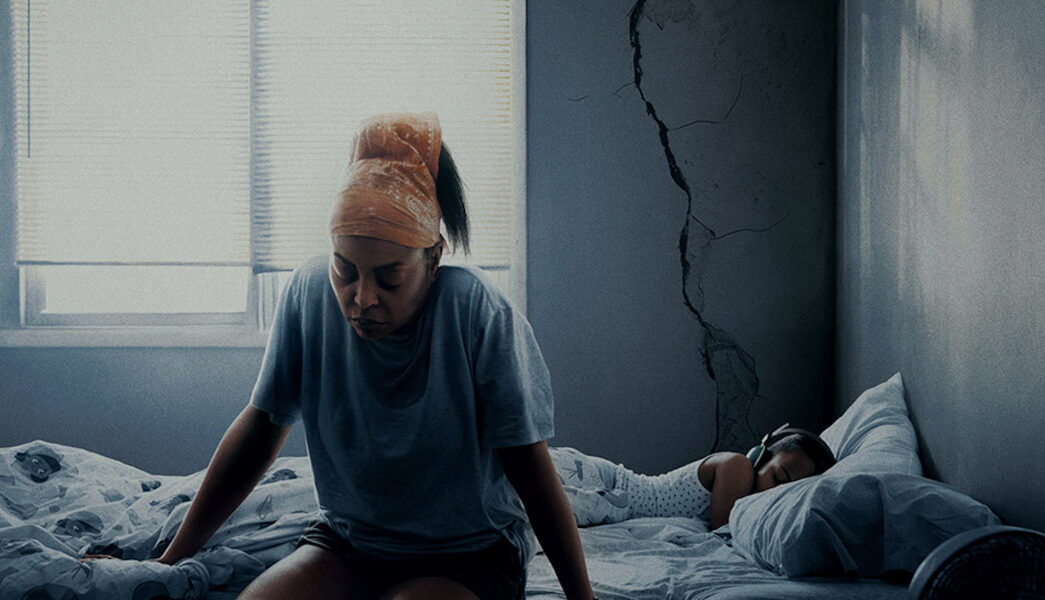When Tyler Perry released the poster for his latest film, “Straw,” starring Taraji P. Henson, the internet didn’t waste a moment connecting it to a cultural touchstone. With Henson’s figure slouched at the edge of a bed, grabbing the sheets, and bathed in a melancholy morning light, fans quickly pointed out its uncanny resemblance to Annie Lee’s iconic painting, Blue Monday.
What at first seemed like a coincidence is actually a full-circle moment that bridges generational Black artistry and womanhood, exhaustion and resilience.
Who Was Annie Lee?
Annie Lee was more than just a painter, she was a storyteller. Born in Gadsden, Alabama in 1935 and raised in Chicago, Lee didn’t begin painting professionally until she was in her 40s, proving that creative destiny doesn’t run on a fixed schedule. Her works often feature faceless Black characters engaged in everyday life, a powerful choice that made the scenes more universal. Instead of focusing on identity, she focused on shared experience.
Lee’s paintings resonate because they feel like lived memory. There were church ladies fanning themselves, children jumping double dutch, and mothers sitting at the edge of their beds, contemplating another day of survival. Her ability to visually narrate the inner lives of Black Americans, especially Black women, made her one of the most beloved visual artists in the Black community.
The Meaning Behind Blue Monday
Blue Monday, one of Lee’s most well-known works, depicts a Black woman sitting at the edge of her bed, visibly weary, caught in that in-between moment before the obligations of the day fully settle in. It’s a portrait of mental, physical, and spiritual exhaustion. Until recently, the full backstory behind the piece remained largely unknown.
That changed when Lee’s granddaughter took to Instagram following the release of “Straw.”
“Thanks for all the tags per useeeeee!” she wrote. “My grandma painted this because she was tired of waking up every week and working on the railroad! So she painted real life.”
The rawness of that truth, a Black woman tired of working the railroad and creating art as a way to cope, is what gives Blue Monday its soul.
Lee’s granddaughter, now an active steward of her legacy, has been instrumental in keeping Annie Lee’s art alive for a new generation. Her candid online presence and transparency about the family’s history is a reminder that cultural preservation isn’t always formal, it’s often intimate, grounded in community connection.
Blue Monday in Pop Culture
Tyler Perry isn’t the only one who was inspired by Lee’s art. In December 2022, Saturday Night Live lit up when Lizzo hit the stage for her song “Break Up Twice” and fans immediately recognized her staging as a loving nod to Annie Lee’s Blue Monday. In a quiet yet powerful moment, Lizzo sat on a bed wearing a white slip, set against a melancholic blue-lit backdrop, complete with a lamp, clock, slippers, and calendar. The set up of the performacne mirrored the iconic painting scene frame by frame.
Lizzo herself thanked her creative team on Instagram for pulling off the vision “with less than a week to prepare.” The performance reinforced the emotional truth of Black women’s perseverance, echoing Lee’s legacy of turning everyday fatigue into a universal statement of strength.
Why “Straw” Matters
Tyler Perry’s “Straw” tells the story of Janiyah Wiltkinson, played by Henson, a single mother whose life unravels over the course of an unforgiving day. Financial pressures, a terminally ill daughter, and a broken system push her to her breaking point.
The poster doesn’t just echo Blue Monday visually, it embodies it emotionally. Perry, known for tapping into the struggles of Black women, makes a deliberate nod here. He’s not just telling a story, he’s situating it within Black women’s story, where the visual language of Annie Lee’s work remains relevant.
By referencing Blue Monday, “Straw” becomes part of a larger cultural conversation about the burden Black women carry, the fatigue that rarely gets seen, and the beauty in endurance.
Blue Monday has quietly permeated the culture for decades. It’s been printed on calendars, church bulletins, dorm room posters, and Mother’s Day cards. It shows up in hair salons and doctors’ offices.
But with “Straw,” viewers see its power reach the big screen. It acts as a mirror. One that reflects back not just tiredness, but grace. Survival. Artistry born of labor.
